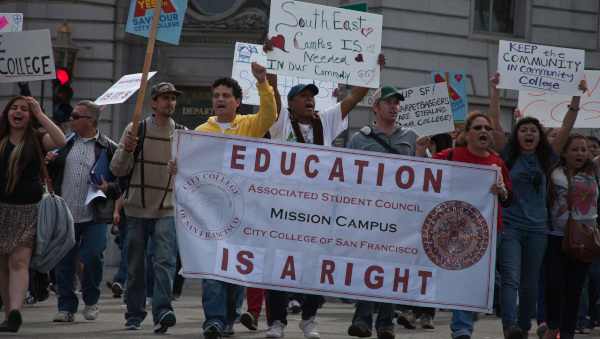
By Charla Bear, KQED
College enrollment rates have swelled across the nation during the Great Recession, but not in California. Researchers with the Public Policy Institute of California (PPIC) found that budget cuts to the state's community colleges over the past few years have shut out nearly 600,000 prospective students. That has left enrollment in the nation's largest public higher education system at a 20-year low.
Sarah Bohn, lead researcher of a new report by PPIC, added that enrollment in the University of California and California State University systems has declined during the same period. The drop is "troubling," she said, for a state that needs more college-educated workers for its increasingly high-tech economy.
"We've seen an increase in the fraction of students in California that are graduating from high school, but at the same time we haven't seen a corresponding increase in those who are attending college at any level within the state," she said. "It really raises concern about are these students going to college at all?"
The PPIC findings mirror figures reported by the Community College Chancellor's Office, which tallied enrollment throughout the system at 2.4 million students in 2011-12, down from 2.9 million students in 2008-09.
BUDGET CUTS TO BLAME
PPIC's report links the falling enrollment directly to budget cuts. It found the state's community colleges lost more than $1.5 billion in funding between 2007–08 and 2011–12. In response, administrators have slashed the number of courses and laid off faculty and staff.
